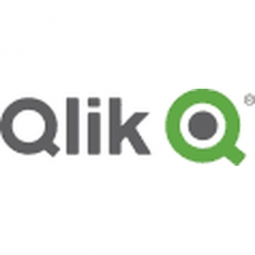下载PDF
QlikView turns Bouman GGZ into “clicking” addict
技术
- 分析与建模 - 实时分析
适用行业
- 医疗保健和医院
适用功能
- 商业运营
- 人力资源
用例
- 预测性维护
服务
- 数据科学服务
挑战
Bouman GGZ, the largest mental health organization in the Netherlands, was faced with a very compartmentalized information system at the end of 2005. The Planning & Control and Finance departments provided managers with information from their financial system, HR delivered data from their HRM system, and the Clinical group delivered data from their healthcare system. Each department did this in its own way, with its own tools: Excel, Cognos or Oracle. After a few days, the managers received a print-out or an Excel sheet with the information they had requested. This was not a model of efficiency and customer-friendliness. At the same time, a need was emerging to combine the data from the three systems. Personnel, financial and clinical data is often interconnected and that’s how the management wanted to see it. But it wasn’t possible: everything was compartmentalized.
关于客户
Bouman GGZ is the largest mental health organization in the Netherlands, specializing particularly in addiction. With a workforce of over 850, Bouman provides services at over fifty locations in the Zuid-Holland-Zuid region, spread across the municipalities of Rotterdam, Schiedam, Vlaardingen, Dordrecht, Leerdam, Gorinchem and Spijkenisse. Besides treating addicts, Bouman disseminates information on the dangers of drugs and alcohol abuse. The organization is faced with the challenge of compartmentalized information systems, with different departments providing managers with information from their respective systems in their own ways. This has led to inefficiencies and a lack of customer-friendliness. Furthermore, the organization is unable to combine data from the three systems, despite the interconnectedness of personnel, financial, and clinical data.
解决方案
In the spring of 2006, Bouman started the implementation of QlikView, the engine behind the “information factory”. It all ran fairly smoothly, but the data owners were causing a bottleneck. “At first it was difficult getting them to leave their departmental mindset and come into line,” Schenkels recalls. “They were scared of losing their grip on what had always been their job. But they soon saw that QlikView would significantly ease the burden on their department by collecting (and refreshing) information from the source systems during the night and placing it for perusal in the QlikView file on the server. At present, around 25 people can retrieve this information: directors, cluster managers and support staff. This number will increase, as we are offering more and more operational information via QlikView. In the course of 2007 team managers and administrative workers will also be able to access the database due to, amongst others, the introduction of a new finance system, based on Diagnosis Treatment Combinations (DTCs).”
运营影响
相关案例.

Case Study
Hospital Inventory Management
The hospital supply chain team is responsible for ensuring that the right medical supplies are readily available to clinicians when and where needed, and to do so in the most efficient manner possible. However, many of the systems and processes in use at the cancer center for supply chain management were not best suited to support these goals. Barcoding technology, a commonly used method for inventory management of medical supplies, is labor intensive, time consuming, does not provide real-time visibility into inventory levels and can be prone to error. Consequently, the lack of accurate and real-time visibility into inventory levels across multiple supply rooms in multiple hospital facilities creates additional inefficiency in the system causing over-ordering, hoarding, and wasted supplies. Other sources of waste and cost were also identified as candidates for improvement. Existing systems and processes did not provide adequate security for high-cost inventory within the hospital, which was another driver of cost. A lack of visibility into expiration dates for supplies resulted in supplies being wasted due to past expiry dates. Storage of supplies was also a key consideration given the location of the cancer center’s facilities in a dense urban setting, where space is always at a premium. In order to address the challenges outlined above, the hospital sought a solution that would provide real-time inventory information with high levels of accuracy, reduce the level of manual effort required and enable data driven decision making to ensure that the right supplies were readily available to clinicians in the right location at the right time.

Case Study
Gas Pipeline Monitoring System for Hospitals
This system integrator focuses on providing centralized gas pipeline monitoring systems for hospitals. The service they provide makes it possible for hospitals to reduce both maintenance and labor costs. Since hospitals may not have an existing network suitable for this type of system, GPRS communication provides an easy and ready-to-use solution for remote, distributed monitoring systems System Requirements - GPRS communication - Seamless connection with SCADA software - Simple, front-end control capability - Expandable I/O channels - Combine AI, DI, and DO channels

Case Study
Driving Digital Transformations for Vitro Diagnostic Medical Devices
Diagnostic devices play a vital role in helping to improve healthcare delivery. In fact, an estimated 60 percent of the world’s medical decisions are made with support from in vitrodiagnostics (IVD) solutions, such as those provided by Roche Diagnostics, an industry leader. As the demand for medical diagnostic services grows rapidly in hospitals and clinics across China, so does the market for IVD solutions. In addition, the typically high cost of these diagnostic devices means that comprehensive post-sales services are needed. Wanteed to improve three portions of thr IVD:1. Remotely monitor and manage IVD devices as fixed assets.2. Optimizing device availability with predictive maintenance.3. Recommending the best IVD solution for a customer’s needs.

Case Study
HaemoCloud Global Blood Management System
1) Deliver a connected digital product system to protect and increase the differentiated value of Haemonetics blood and plasma solutions. 2) Improve patient outcomes by increasing the efficiency of blood supply flows. 3) Navigate and satisfy a complex web of global regulatory compliance requirements. 4) Reduce costly and labor-intensive maintenance procedures.

Case Study
Harnessing real-time data to give a holistic picture of patient health
Every day, vast quantities of data are collected about patients as they pass through health service organizations—from operational data such as treatment history and medications to physiological data captured by medical devices. The insights hidden within this treasure trove of data can be used to support more personalized treatments, more accurate diagnosis and more advanced preparative care. But since the information is generated faster than most organizations can consume it, unlocking the power of this big data can be a struggle. This type of predictive approach not only improves patient care—it also helps to reduce costs, because in the healthcare industry, prevention is almost always more cost-effective than treatment. However, collecting, analyzing and presenting these data-streams in a way that clinicians can easily understand can pose a significant technical challenge.






